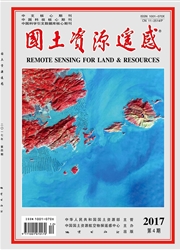

 中文摘要:
中文摘要:
利用2013年金沙江干流8个典型断面的植被生态现场考察资料,综合运用定性与定量分析方法,对金沙江干流的植被空间异质性及其对生态恢复的影响进行了初步分析。分析结果表明:1干流植被空间异质性特征明显,表现为上、中、下游植被景观格局、群落结构与物种组成均存在明显的差异;2金沙江干流自然植被群落的结构完整性不高、组分单一、多以灌木和草本为主,生长型和生活型上具有多旱生、寒生植物的特点;3自然植被及其空间分异对干流生态环境具有重要指示意义,建议在金沙江干流的生态恢复实践中,充分尊重植被空间异质性的自然规律,分区域、分类型地制定生态恢复策略,同时利用好本土植物种子资源,以旱生灌、草类植物作为先锋物种,分步骤、分阶段地开展生态恢复工作。
 英文摘要:
英文摘要:
In this paper,based on field investigation data on vegetation ecology from 8 typical sections of the Jinsha River in 2013,the vegetation spatial heterogeneity of valleys along the river and its influence on ecological restoration were qualitatively and quantitatively analyzed. Results show that: 1) There are obvious regional diversities of vegetation in the valleys from the downstream to upstream in Jinsha River,namely landscape pattern,vegetation community,and species composition; 2) Quantitative analysis results show that,as for the valleys of Jinsha River,vegetation community has a tendency of incomplete structure and monotonous composition,and main types of vegetation are shrubs and herbs,with characteristics of psychrophyte and xerophytic plant; 3) The analysis results show that,the spatial heterogeneity of natural vegetation essentially reflects the ecological environment of valleys along Jinsha River,in the ecological restoration,we should obey the natural law of spatial heterogeneity of vegetation,meanwhile,effective measures should be taken to make good use of seed resources of native plants in terms of region and vegetation type,and shrubs and herbs suitable for arid region should be firstly applied. On the basis of this,we take measures in steps and stages to promote ecological restoration.
 同期刊论文项目
同期刊论文项目
 同项目期刊论文
同项目期刊论文
 期刊信息
期刊信息
